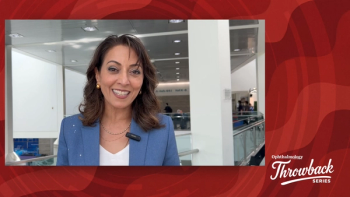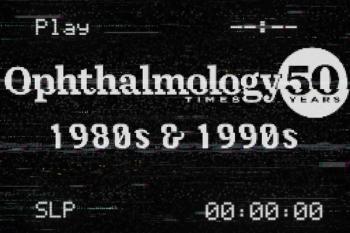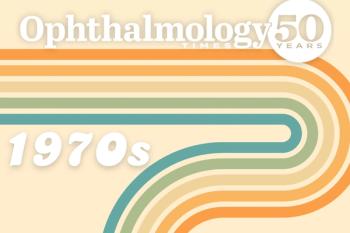
Laser cataract surgery making complex cases more routine
International panel shares overview of current and future applications, benefits, challenges
An international panel of laser cataract surgery (LCS) expert users share their experiences, identifying directions for new research.
Reviewed by Frank Goes Jr., MD; Thomas Laube, MD; Javier Mendicute, MD; Bernardo Mutani, MD; David O’Brart, MD; Jose Luis RodrÃguez-Prats, MD; and Julian Stevens, MD
Almost a decade after the first femtosecond laser for cataract surgery became commercially available, laser cataract surgery (LCS) continues to have a limited role in clinical practice. Surgeons who have adopted the technique and become expert-users firmly believe that the laser adds value now and holds great promise for the future.
During the 36th Congress of the European Society of Cataract and Refractive Surgeons (ESCRS) in a meeting led by Julian D. Stevens, MD, Moorfields Eye Hospital, London, an international panel of LCS expert-users shared their experiences with the aims of learning from each other and identifying directions for new research.
The consensus of the group was that, even for routine cases, there is a role for using the femtosecond laser because it makes cataract surgery more straightforward, more reproducible, and safer. In addition, because laser pretreatment shortens the non-laser portion of the procedure, LCS reduces surgery-related ergonomic stress that can shorten a cataract surgeon’s career.
The panel’s discussion particularly highlighted the benefit of using the femtosecond laser for treating pre-existing astigmatism, which has relevance in a large percentage of routine cases and brought to the forefront its role in complex situations, including eyes with a dense black or intumescent cataract.
Looking ahead, the participants agreed that with the expected evolution toward capsulotomy-fixated implants, access to LCS will have an unequivocal advantage for enabling delivery of optimal refractive and functional outcomes.
Intrastromal astigmatic keratotomy
Compared with manual penetrating astigmatic keratotomy (AK), femtosecond laser-assisted AK (FS-AK) has advantages for providing better rotational/angular alignment, better patient comfort, and reduced risk of infection. Data presented during meeting provided evidence that FS-AK is more effective than the manual approach and its result is more stable.
David O’Brart, MD, St. Thomas’ Hospital, London, presented findings from analyses of outcomes in groups of patients who underwent FS-AK or manual limbal relaxing incisions (LRIs) in the context of a randomized controlled trial comparing LCS and conventional surgery [J Cataract Refract Surg. 2018;44:955-963].
The analyses included eyes with no visually significant comorbidities that were treated for >1 D of corneal astigmatism with a plano refractive target. At 1 month after surgery, postoperative cylinder was ≤0.50 D in 18 (42%) of 43 eyes in the FS-AK group and in only 8 (20%) of 41 eyes in the LRI group. Dr. O’Brart reported that there were statistically significant differences favoring FS-AK in analyses of difference vector and correction index.
Thomas Laube, MD, private practice, Düsseldorf, Germany, presented results from a retrospective study demonstrating the efficacy and stability of FS-AK for reducing corneal and refractive astigmatism [Open Journal of Ophthalmology. 2017;7:262-272].
The study included 42 eyes with 0.5 D to 1.5 D of regular corneal astigmatism and total corneal irregular astigmatism and separate the arc walls. Therefore, it is important to use sufficient power, especially in younger patients. Dr. Stevens also said that there is an increased risk for pupil constriction when performing FS-AK because the laser treatment is commonly placed over the iris. To mitigate this effect, he pre-treats the eyes with ketorolac drops and schedules the cases to minimize the delay between the laser and operating room portions of the procedure.
Making complex cases more routine
- Intumescent cataract
Frank Goes Jr., MD, private practice, Antwerp, Belgium, presented his experience using a laser system (Catalys Precision Laser System, Johnson & Johnson Vision) to perform “ultrafast” capsulotomy in an eye with an intumescent cataract.
“I have no doubt it was a good idea to use the laser when operating on an intumescent lens,” Dr. Goes said. He explained that, during manual capsulorhexis or standard laser capsulotomy, release of intralenticular pressure in an eye with an intumescent cataract creates a risk for radial tearing of the anterior capsule.
Dr. Goes adjusted the settings for performing the capsulotomy to shorten his capsulotomy time to just 0.3 seconds (Table 1 on Page 12). The increase in speed did not compromise quality, he said. Using trypan blue in the operating room to aid visualization, Dr. Goes saw that the capsule disk was not free-floating, but it was free of tags, and he removed it successfully without any radial tearing.
The meeting participants agreed that more evidence is needed to support use of the modified settings as a standard for laser capsulotomy in eyes with an intumescent cataract. Dr. Stevens noted that because a significant number of such cases present to Moorfields, he might have the opportunity to amass a series for a prospective study.
It was also noted that a double capsulotomy technique, involving an initial “mini” opening and a second larger capsulotomy, has been described as an alternative for safe capsulotomy in eyes with an intumescent cataract [J Refract Surg. 2014;30:742- 745].
In this method, the first capsulotomy allows for release of intralenticular pressure. After fluid lens material is removed from the anterior chamber, the eye is redocked for the second capsulotomy.
Dr. Stevens observed that the need for redocking adds time to the procedure and increases the risk for subconjunctival hemorrhage. Because of those issues, he called for manufacturers to modify their systems and eliminate the need for redocking after operators remove their foot from the pedal.
Dr. Goes’ case also prompted a discussion about reducing capsulotomy time in routine cases in order to minimize the potential for eye movement that would affect the accuracy of laser pulse placement.
Dr. Stevens suggested that because the lasers work well “out of the box” with the use of the manufacturer-recommended settings, surgeons are reluctant to experiment with modifications because they are worried about higher rates of incomplete capsulotomy.
- Anterior lenticonus
Jose Luis RodrÃguez-Prats, MD, Clinica Visahermosa, Oftalvist, Alicante, Spain, also presented a case in which use of the laser for capsulotomy proved beneficial. The case involved an eye with anterior lenticonus associated with Alport syndrome. “Performing anterior continuous curvilinear capsulorhexis in these eyes is difficult due to the structurally abnormal anterior capsule,” he said.
The patient described by Dr. RodrÃguez-Prats underwent bilateral FLACS with the Catalys laser using the device’s software calipers to manually delineate the anterior capsulotomy. Multifocal toric IOLs were implanted with the aid of intraoperative aberrometry for power selection.
Preoperative UCVA was 0.8 OU in moderate photopic conditions; subjective refraction was -5.25 -7.25 x 180 OD and -6.75 -8.50 x 165 OD. Postoperatively, the patient achieved distance UCVA of 0.9 OU. BCVA was 1.0 OU, and his refraction was plano -0.50 x 5 OD and +0.50 -1.0 x 170 OS. At 45 days after surgery, both IOLs remained well centered.
- Dense black cataract
Javier Mendicute, MD, Donostia University Hospital and Innova Begitek Ophthalmology Clinics, Donostia-San Sebastián, Spain, reviewed the benefits of LCS when operating on very dense (black) cataracts.
In his opinion, the possibility of using the laser in black cataracts depends on the imaging system’s ability to identify anatomic structures in the situation where there is poor media transparency as well as the accuracy and penetration ability of the laser.
The type of OCT, its working wavelength, and the speed of image capture determine the quality of the image obtained through opaque media and the possibility of identifying the posterior capsule when there is limited lens transparency.
Dr. Mendicute noted that he believes swept-source OCT is the best option for posterior capsule identification because it has faster acquisition time and deeper penetration than Scheimpflug technology or time-domain or spectral-domain OCT (Figure 2).
He noted, however, that he has had the opportunity to use all femtosecond platforms in the market and that all of the equipment available today allows the automatic identification of anatomical references.
“Because of the imaging technology that allows identification of the posterior capsule and their precision, femtosecond lasers can be used to safely treat the lens close to the posterior capsule,” Dr. Mendicute said.
The best fragmentation pattern to achieve the minimum use of energy and maximum efficiency when treating a dense black cataract is debatable. Dr. Mendicute said that a grid pattern can require a lot of energy and result in a lot of bubble generation.
His approach uses a pattern that he named “microcrater, divide and conquer” in recognition of Howard Gimbel, MD (Figure 3). Using the femtosecond laser, he creates a 2-mm central disc and three radial cuts.
“After phacoemulsification of the central disc, there is a point of support to split the lens into six fragments that are easily removable,” Dr. Mendicute said.
Bernardo Mutani, MD, Torino, Italy, presented his experience with LCS using the Catalys laser in an eye with a foldable posterior chamber phakic IOL (Visian ICL, STAAR Surgical).
Because the imaging system did not recognize the anterior surface of the cataract, Dr. Mutani said he needed to manually customize the anterior capsule to fit on the anterior surface of the lens.
Thereafter, he was able to use his routine laser settings to successfully complete both the capsulotomy, which was centered on the pupil, and lens fragmentation.
Dr. Mutani noted that trapping of cavitation bubbles in the space between the phakic IOL and the anterior lens capsule, which could impair laser energy delivery for the fragmentation step, was not a problem in this case that involved a cortical cataract.
“It is our experience that less gas is generated when treating a cortical cataract compared with a nuclear cataract,” Dr. Mutani said.
In the discussion following Dr. Mutani’s presentation, concern was also raised that in eyes with a phakic IOL, the laser’s imaging system may give erroneous readings of the capsule surfaces. Dr. Stevens noted that due to these challenges, he chooses to do standard cataract surgery in eyes with a phakic IOL.
Disclosures:
Frank Goes Jr., MD
E: [email protected]
Thomas Laube, MD
E: [email protected]
Dr. Laube receives speakers’ fees from Johnson & Johnson GmbH.
Javier Mendicute, MD
E: [email protected]
Dr. Mendicute is a consultant to and receives research grants and support from Alcon, Johnson & Johnson Vision, and Carl Zeiss Meditec, and he is a member of the speakers’ bureau for Alcon and Bausch + Lomb.
Bernardo Mutani, MD
E: [email protected]
David O’Brart, MD
E: [email protected]
Dr. O’Brart has been a consultant to and received a non-commercial research grant from Alcon.
Jose Luis RodrÃguez-Prats, MD
E: [email protected]
Julian Stevens, MD
E: [email protected]
Drs. Goes, Mutani, RodrÃguez-Prats, and Stevens have no relevant financial interests to disclose. The meeting of expert-users was organized by targomed GmbH and supported by an educational grant from Johnson & Johnson Vision.
Newsletter
Don’t miss out—get Ophthalmology Times updates on the latest clinical advancements and expert interviews, straight to your inbox.


















































.png)


